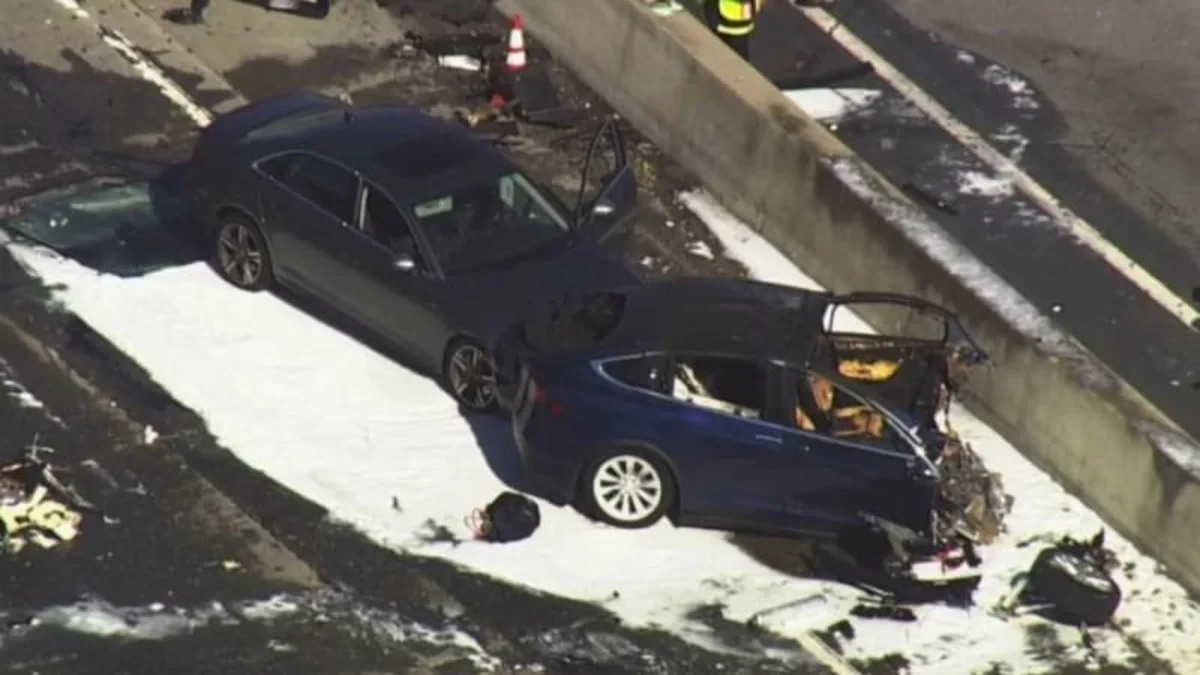WASHINGTON — The U.S. National Transportation Safety Board said on Sunday it was "unhappy" that electric car maker Tesla made public information about the crash of its Model X vehicle on Autopilot that killed the driver last month.
The agency "needs the cooperation of Tesla to decode the data the vehicle recorded," NTSB spokesman Chris O'Neil said in a statement. "In each of our investigations involving a Tesla vehicle, Tesla has been extremely cooperative on assisting with the vehicle data.
"However, the NTSB is unhappy with the release of investigative information by Tesla," he added.
A Tesla spokesperson declined to comment.
The board's reaction to Tesla was first reported by The Washington Post Sunday evening.
O'Neil was responding to Tesla's announcement on Friday that the Tesla Model X involved in the crash had activated its Autopilot system moments before the March 23 mishap. Tesla, in a blog post, also seemed to offer a defense for why the crash was so severe, saying a safety "attenuator" on the highway, used to ease damage from a crash into a barrier, had been "crushed in a prior accident without being replaced."
The driver, Walter Huang, 38, died at a hospital shortly after the vehicle hit a concrete highway divider near Mountain View, California. The crash involved two other vehicles. Huang's family said he had complained about the Autopilot wanting to steer toward the barrier at that location.
"The NTSB is looking into all aspects of this crash including the driver's previous concerns about the autopilot," said O'Neil. "We will work to determine the probable cause of the crash, and our next update of information about our investigation will likely be when we publish a preliminary report, which generally occurs within a few weeks of completion of field work."
Last week, the company said that a search of its service records did not "find anything suggesting that the customer ever complained to Tesla about the performance of Autopilot. There was a concern raised once about navigation not working correctly, but Autopilot's performance is unrelated to navigation."
In its announcement on Friday, the company said that shortly before the crash, the vehicle's "Autopilot was engaged with the adaptive cruise control follow-distance set to minimum."
On Autopilot, drivers can take their hands off the wheel for extended periods under certain conditions, and routinely brag they can use the system to drive hands-free. Tesla, however, requires users to agree to keep their hands on the wheel at all times before they can use Autopilot.
"The driver had received several visual and one audible hands-on warning earlier in the drive and the driver's hands were not detected on the wheel for six seconds prior to the collision," Tesla said. "The driver had about five seconds and 150 meters of unobstructed view of the concrete divider with the crushed crash attenuator, but the vehicle logs show that no action was taken."
The statement did not say why the car's systems apparently did not detect the concrete divider.
Reporting by Jonathan Landay
Related Video:


Sign in to post
Please sign in to leave a comment.
Continue